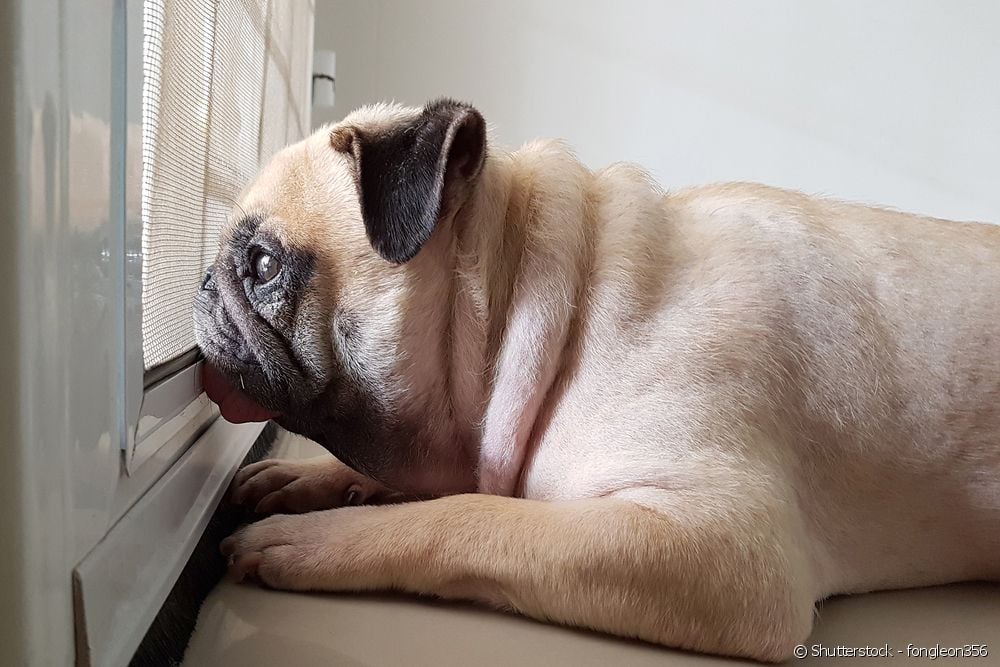Dog separation anxiety: 7 tips on how to decrease dog stress during owner absence

Table of contents
It is very common for dogs to suffer from separation anxiety. Dogs that tend to stay at home alone during their owners' work period are the most prone to the condition. Some factors may be related to behavior, such as attachment to human family members, for example. But do you know how to identify if your dog suffers from anxiety? Below, we list some typical characteristics of this conditioncanine condition and tips on how to help your dog overcome trauma.
How do I know my puppy is suffering from separation anxiety?
Canine separation anxiety is a panic condition that affects dogs and can lead to a range of behaviors even in trained animals. Scratching doors, crying, barking and howling insistently, defecating and urinating outside are the most common signs that your pet is experiencing anxiety attacks. In more critical cases, they can even hurt themselves. Seek adviceThese crises can happen even in cases of separation for just a few minutes, such as waiting outside the supermarket, in the car - even accompanied by other humans - or when the owner goes to put out the garbage.
See_also: Blackheads in dogs: learn all about canine acneTips for preventing and treating puppies with separation anxiety

There are a few tricks you can try to condition your dog's behavior for situations where they may have anxiety attacks. Check them out!
Tip 1: do not prolong goodbyes
Treating your departure from home naturally is a great way to make your dog understand that he has no reason to suffer. Also try coming home more calmly, without too much partying. That way, your arrivals and departures are not turned into tense moments;
Tip 2: environmental enrichment
Providing distraction for your dog during his alone time is a way for him to entertain himself and connect the moment to good things. Try scattering food around the house for him to play a sort of "treasure hunt", leaving toys in easy to reach places and programming the TV for about 30 minutes after you leave. These are some environmental enrichment strategies for your dog.dog that usually work.
Tip 3: dog treats
Spreading dog treats around the house is also a great way to distract your puppy during your time away from home. You can put it under the carpet, in corners of the wall, on top of the sofa, in short, like a treasure hunt! And there's more: there are specific snacks for pets' oral hygiene, which prevents the formation of tartar, so, in addition to the game, cleaning the teeth is also important.guaranteed!
Tip 4: Pretend to leave
Go through the whole ritual of when you are going out, such as packing bags and putting on your shoes. During these steps, a few treats will help turn these small movements into something positive. After a few days, he will have already conditioned his going out to good things.
Tip 5: Alternative therapies
There are florals for dogs that are specially formulated for pets suffering from separation anxiety. Consult your vet for the correct use.
Tip 6: stimulate chewing
Offering toys that can be chewed on without posing a danger to dogs can help relieve stress and anxiety over the absence of their owners.
Tip 7: training
Dogs that know basic commands such as sit, lie down and paw can better cope with separation from their owner. Trainers indicate that a 5-minute training session + treat about 20 minutes before you leave the house is enough to promote mental fatigue that will make the dog less agitated. In this way, little by little, he will understand that after a while aloneyou will go back to him.
See_also: Malt for cats: what it is and when to use it
